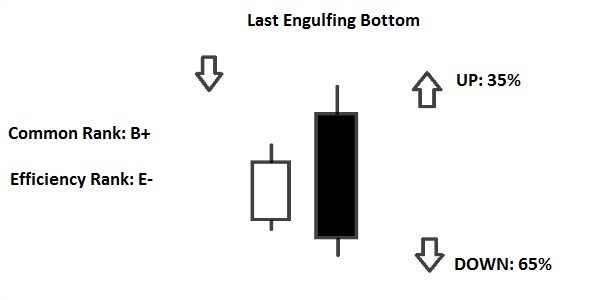
For a better understanding of this article, you should already know what Japanese Candlesticks are and all their features; for this reason, we suggest you to read this introductory article to Japanese Candlesticks: Japanese Candlestick Chart ( So that you can understand also the Ratings given to the Candlestick Patterns for the “quality” of the signal and for their frequency to “appear” on Charts).
Let’s analyse now the following Candlestick Patterns: “Engulfing Line” and “Last Engulfing Top/Bottom”.
Engulfing Line
– Normally it should be a signal of reversal of the current Trend.
– You can find it in the variants: Bullish and Bearish, depending on the Trend in which is located.
– Is one of the most reliable Candlestick Pattern; very often is not even required a confirmation from the next Candles (Although it should be better).
– If this Pattern is located near an High or Low of the current Trend, it’s more reliable.
– General Description: 1) The Real Body of the Second Candle “engulfs” the Real Body of the First Candle; 2) The Second Candle has a different color from the First Candle; 3) The volume of trades should be high during the formation of the Second Candle.
– As you can see from the previous image, the Bullish Engulfing occurs during a Downtrend; normally it should be a signal of bullish reversal.
– Whereas the Bearish Engulfing occurs during an Uptrend; normally it should be a signal of bearish reversal.
Last Engulfing Top/Bottom
– Is a variant of the Engulfing Line; you can find it in the variants: Top and Bottom, depending on the Trend in which is located.
– Last Engulfing Top: 1) It occurs during an Uptrend; 2) The First Candle is black; whereas the Second Candle is long and white, that “engulfs” the Real Body of the First Candle.
– Last Engulfing Bottom: 1) It occurs during a Downtrend; 2) The First Candle is white; whereas the Second Candle is long and black, that “engulfs” the Real Body of the First Candle.








![Binance Review: How the Crypto Exchange Works [2024]](https://www.feedroll.com/wp-content/uploads/2024/03/binance-trading-100x100.png)



